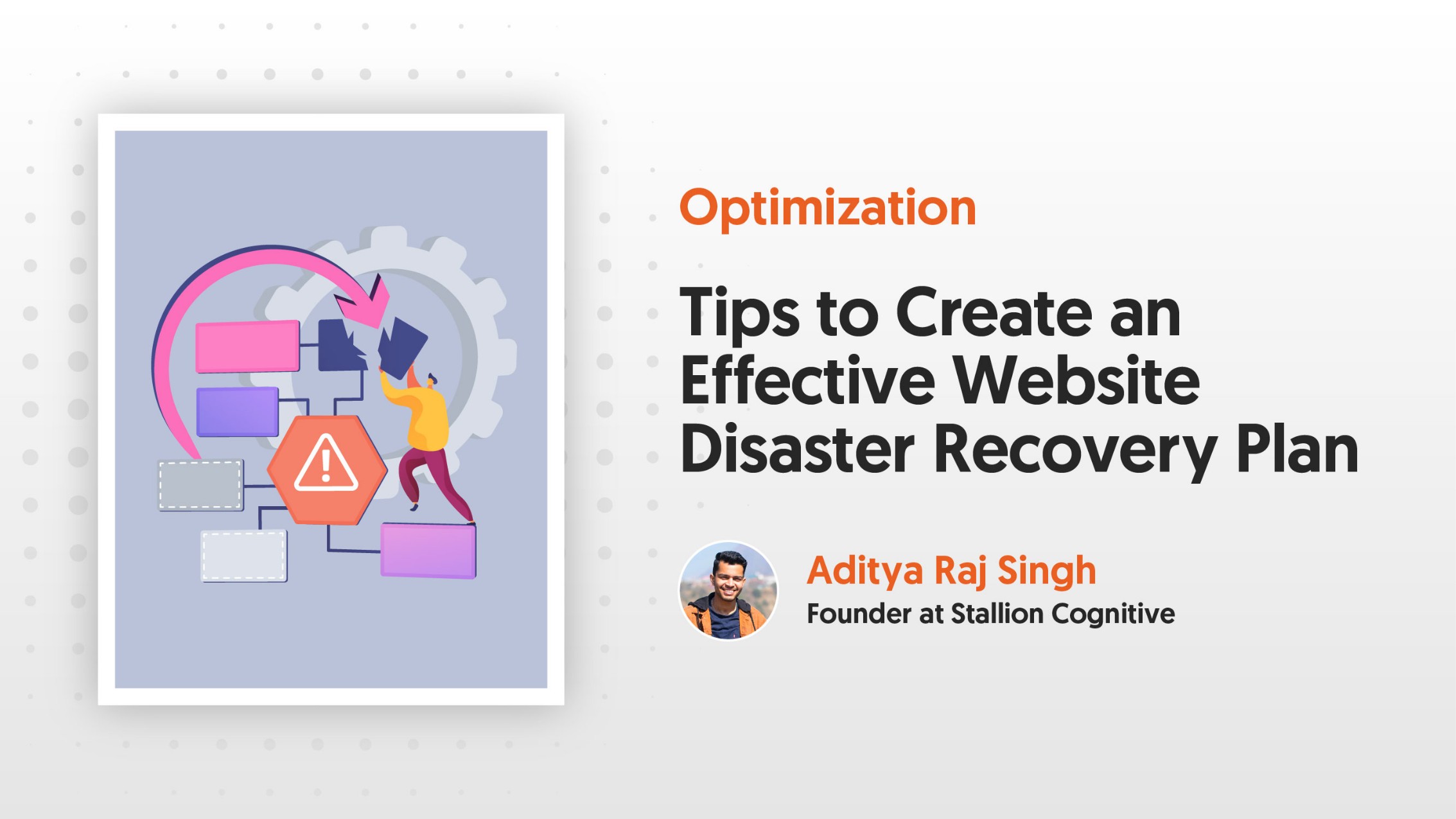A company's website is usually the first point of contact with potential customers. You can't afford for your digital marketing, lead generating, and consumer interaction platform to be unsafe, unreliable, unresponsive, or even unavailable.
Having a robust recovery strategy in place if you experience a website outage is the best way to guarantee that you minimize the damage done by such failures. A disaster recovery strategy can help your company swiftly and efficiently recover from losses due to data breaches, ransomware attacks, or natural disasters.
To keep your website's operations running smoothly, it is crucial to have a backup and data recovery plan in place.
If your disaster recovery plan is outdated, inadequate, or nonexistent, allow these incidents to encourage you to examine, amend, or build a recovery strategy for your website before you need it.
If you want to avoid losing data, keep operations running smoothly, and comply with any regulations that may apply to your sensitive information, follow these six steps to create a disaster recovery plan.
What is a Disaster Recovery Plan?
A disaster recovery plan (DRP) is a strategy for resuming normal business operations in the event of a catastrophic event, such as the loss of data or the inability to access the website. Depending on the organization's current assets and recovery objectives, many tools can be used in disaster recovery planning.
Any situation where users cannot reach a website is considered a "disaster" and must be planned accordingly. Viruses, hackers, server-side scripting, and malicious takedowns are all examples of potential threats to website operations. The objective is to get everything back to normal on the website.
6 Steps To Creating A Disaster Recovery Plan
If you haven't already developed a website recovery strategy to deal with the above scenarios, you can do it quickly and easily by following these tips.
Make Backups Frequently
It is possible for your data to get damaged or even deleted entirely in the case of a hack on your website. What would you do if something happened to your site right now? Do you have a backup? Your images and blog posts?
A backup should be performed immediately if you answered no to any of the above questions. That old excuse, "I don't have time for backups," is dead wrong. Online automated backup services will generate daily backups of your complete website and database.
The hosting control panel of many hosting providers allows you to create backups of your website. Keep backups of your website's content and all other data (photos, videos, etc.) in case you ever need them.
Keep Your Website Maintained Regularly
The best and most secure content management systems, apps, plugins, and security features have regularly released updates to improve the website's stability and functionality. It's important to keep up with these upgrades so your website doesn't become sluggish, unstable, or vulnerable to hacking. A reliable and safe website may save businesses tens of thousands of dollars in repair costs and prevent irreparable harm to their brands and client relationships.
In addition, regular website maintenance facilitates backups and disaster recovery. The only way to guarantee that your data will always be secure and easily accessible is to take a preventative stance toward data security. Regular backups are essential for every website in case of an emergency. Regular backups and a solid disaster recovery strategy may protect you against any catastrophes, like the site being down and needing to be rebuilt or restored or the site being hacked and losing all of its data.
Therefore, if you do routine upkeep on your website, you will greatly increase your odds of discovering and addressing an issue before it magnifies into a critical one. Identify a person or group to take charge of the website's upkeep and security upgrades. This is something that has to be done every week. Make sure you have a recent website copy before making any changes or adjustments.
Update Website Content Frequently
Websites should be redesigned at least once every two years, but content should be updated much more often than that. The answer to this question might range from once a day to twice a year, depending on the nature of the information you have in mind.
This may occur for several reasons, including but not limited to: inaccurate information, inactive links, misspelled words, or boring, low-quality writing. By making changes to your site's content, you may try to address users' concerns and gauge the response you get from future visitors.
Prepare a strategy for updating content when a backup has been made. To make sure the new content appears appropriately on the front end, the second set of eyes is always helpful. As a result, you won't have to worry about making blatant mistakes.
Perform Consistent Monitoring
Long periods of downtime can be avoided with constant monitoring. It also provides you with early warning of problems so that you may address them before they escalate.
Keep in mind that just installing a plugin on your website is not enough to ensure its safety. Using more powerful tools or partnering with a monitoring service that can provide 24/7 support and alert you as soon as an issue occurs is preferable. Don't scrimp on the monitoring since it will cost more initially but will save you a ton of money in the long run.
If your website is down, you can use a free service like Uptime Robot to set up a monitor that checks it every 5 minutes. It will notify you via email if it detects any downtime, allowing you to check in as necessary.
Carry Out Regular Password Audit
The use of passwords has increased dramatically as the primary access point for hackers. Since a password strong enough to ensure privacy is unlikely to be readily remembered, and since the number of passwords users need to remember continues to grow, this practice poses a major security concern.
Because of insufficient or repeated passwords, your network is much less secure than intended. Performing a password audit is the first step toward fixing this issue. An audit of your password security is nothing more than a trial run against dictionary assaults, brute force attacks, and other methods often used by hackers.
Passwords are analyzed by using specialized software, such as LastPass. They mimic malicious attempts to breach your network security and expose your weak and compromised credentials so that you can strengthen your system.
A password manager with collaborative features is the best safeguard for your IT infrastructure. Using their two-factor authentication (2FA) and military-grade encryption, you can rest assured that only authorized users will be able to decipher your passwords.
Create a List of Contacts
In the case of a site outage or other issues, it is imperative that you get assistance from qualified professionals as soon as possible. To get things forward more quickly, it is helpful to have a list of contacts already prepared.
Include the contact information for your website's host, incident response team, and administrators on this list. If you don't have full control over your website, you may want to bring in your company's lawyers.
As soon as an issue arises, please get in touch with the persons on this list. The sooner you take care of this, the sooner you can start repairing your site and minimizing the damage.
Congratulations, You're All Set!
Clearly, you need to have a website recovery strategy in place. Now is the time to put together a backup plan if you haven't already.
If you stick to the tips mentioned above, like we do with our website maintenance plans, you and your team will be able to devise a solution that will get your site back up and running again as quickly as possible.


